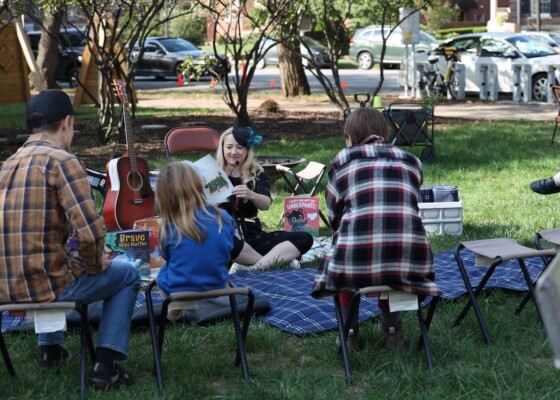5 Things We Learned at Purdue University’s Bee Lab
September 18, 2018During Indiana Humanities’ Quantum Leap Field Trip to Purdue University’s Bee Lab, Dr. Gwen Pearson and Krispn Given from the Purdue Entomology Department took us through the bee lab, showed…
During Indiana Humanities’ Quantum Leap Field Trip to Purdue University’s Bee Lab, Dr. Gwen Pearson and Krispn Given from the Purdue Entomology Department took us through the bee lab, showed us the inside of a beehive, and identified native plants in the pollinator fields. Ryan Schnurr, our humanities scholar, led an insightful conversation about the importance of these insects in our lives using poetry from Diane Fahey and Shakespeare as well as a passage from Thor Hanson’s Buzz: The Nature and Necessity of Bees. Here are a few things we’ll be buzzing about in the days ahead:
1- Shakespeare had it wrong!
In the passage we read from Henry V, Shakespeare used the example of a beehive to demonstrate how social hierarchies are modeled in nature. He said, bees “have a king and officers of sorts.” However, the majority of bees in the hive are female and are “ruled” by a queen. The male bees, or drones, have half the number of chromosomes, no stingers and don’t even collect pollen. For every one male bee, there are 100 females!
2- Bees aren’t native to the United States, but they’ve become important to our society.
Honey bees came to America in the 1600’s from Europe and are now the most important pollinator for agriculture worldwide. They’re also considered a domesticated insect – similar to a dog or cat – since beekeepers cultivate them for honey and pollination.
3- Bees have symbolic language too!
Bees are special; like humans, they can communicate spatially via dance. Check out the “waggle dance” here.
4- Bees are threatened by parasites and pesticides, but entomologists, like those at Purdue, are working on solutions.
Entomologists at Purdue University are working on breeding bees that are resistant to parasitic mites that plague bees. In fact, the “Indiana mite-biter” queens are twice as likely to survive than other commercially available bees. After seeing the process, we’re blown away by the patience and attention to detail it takes to breed bees. Read more about Purdue’s progress here.
5- There are things we can do in our own backyards to help protect pollinators.
Pearson showed us some great native plants that provide food sources for bees through the spring, summer and fall. Additionally, you can avoid using pesticides or other chemicals on your lawns or gardens. Look for natural ways to ward off pests before turning to chemical solutions.


